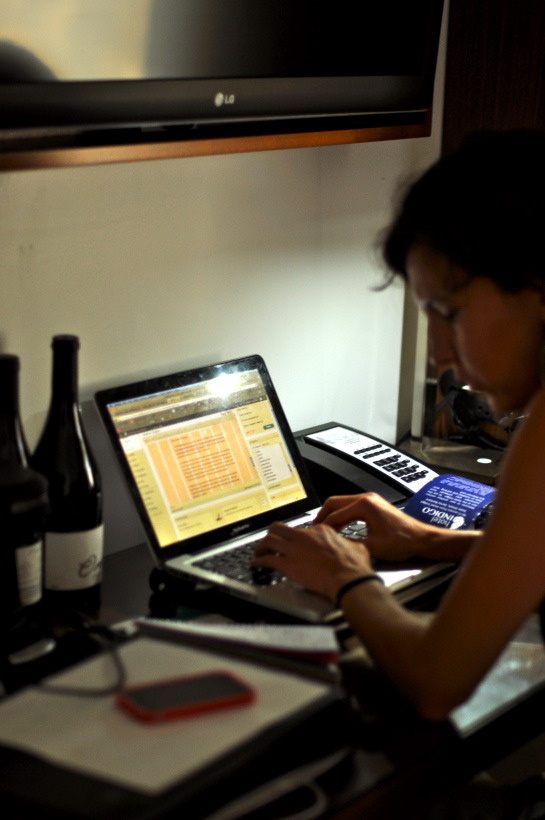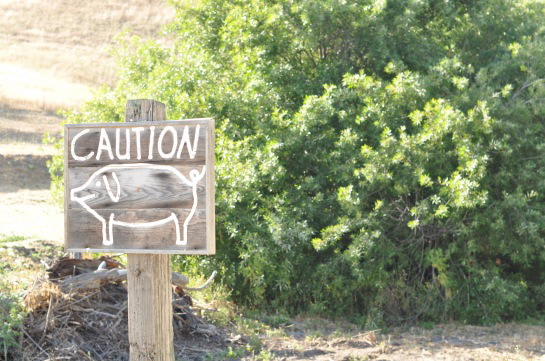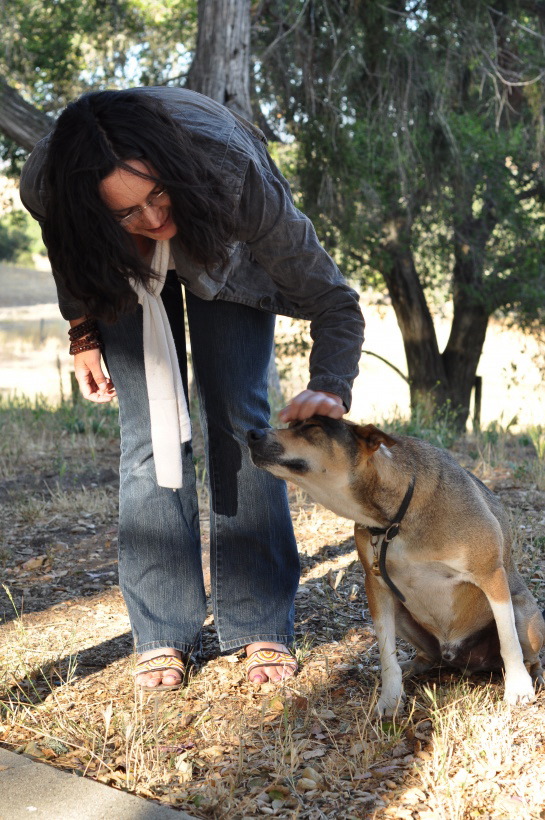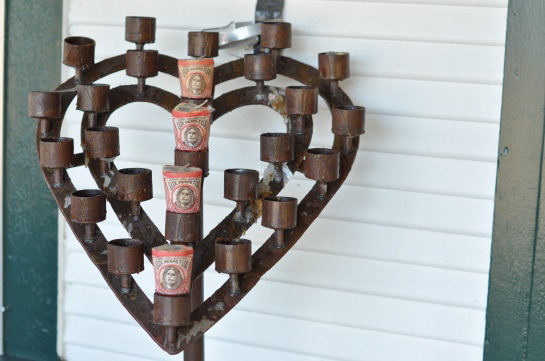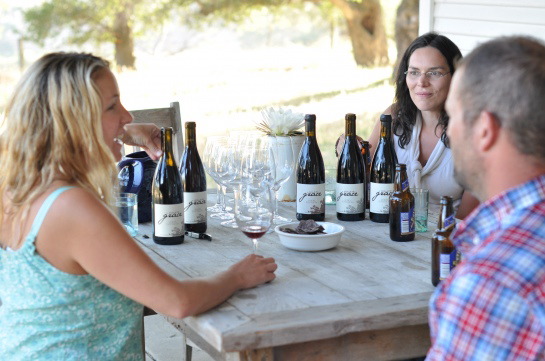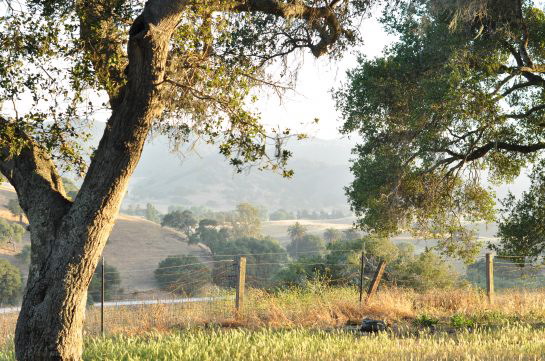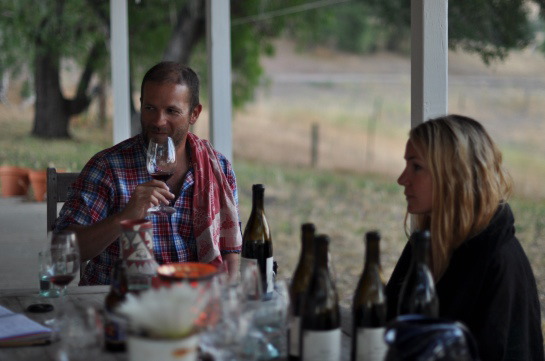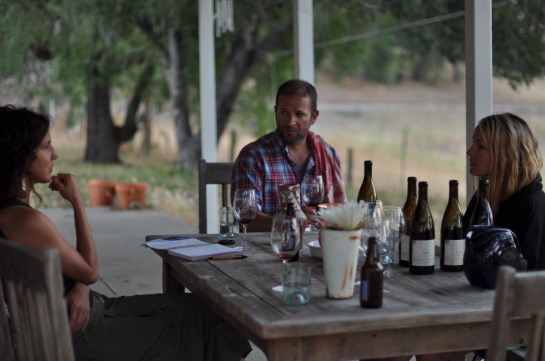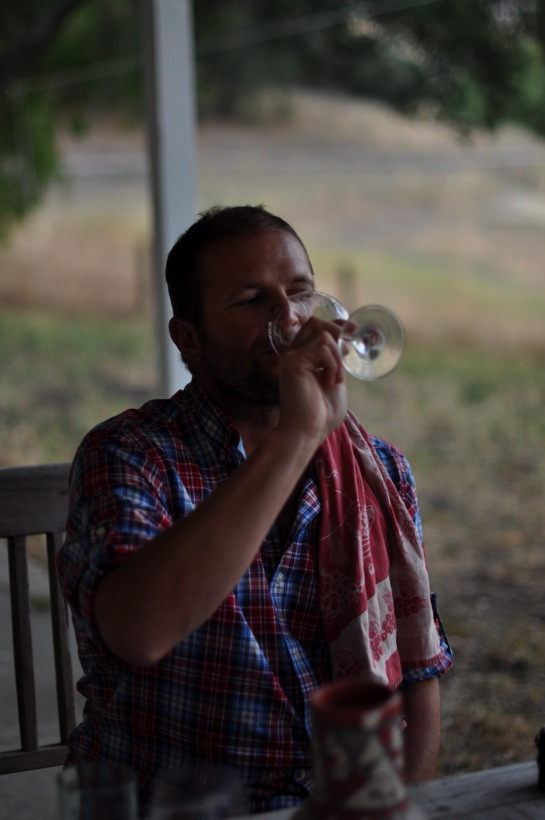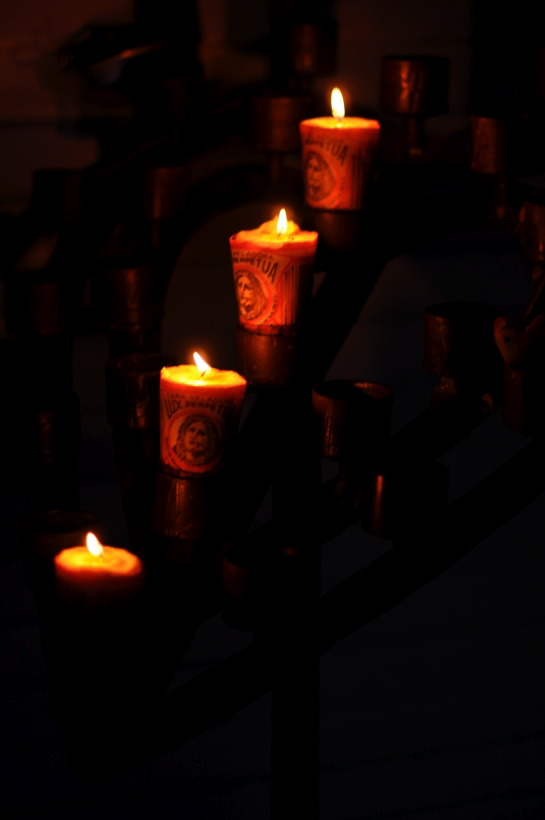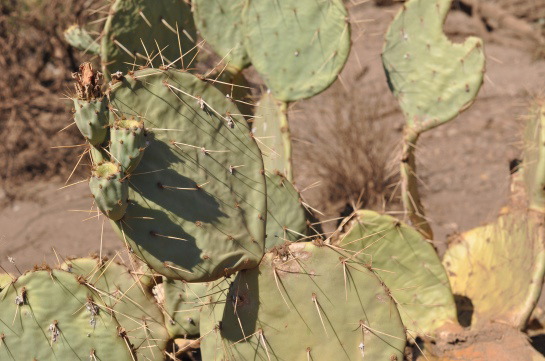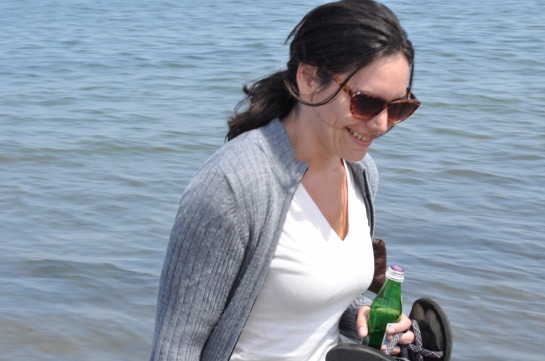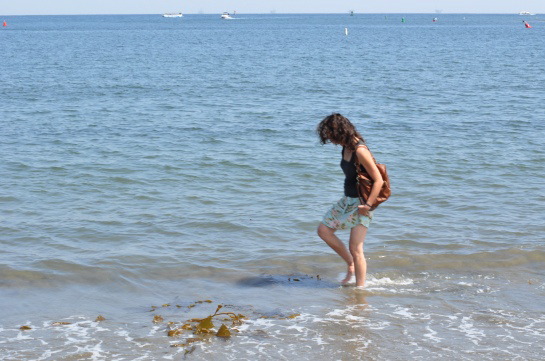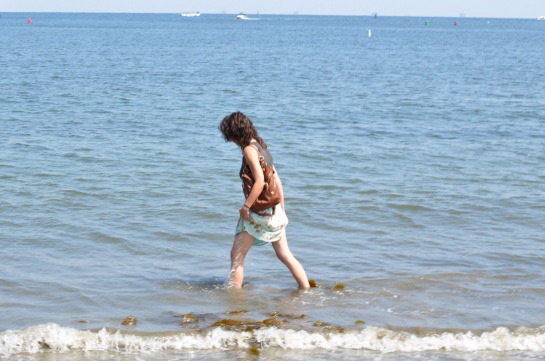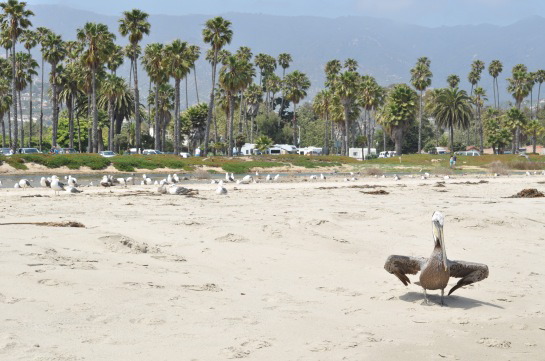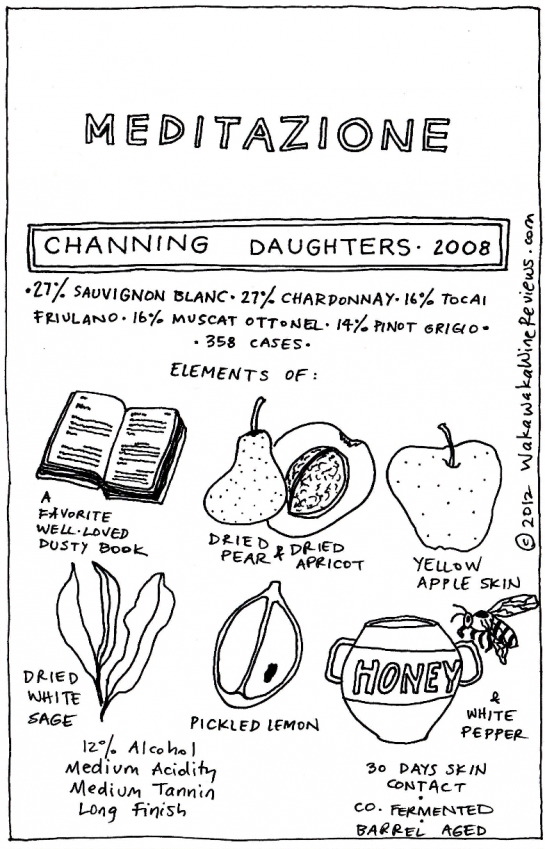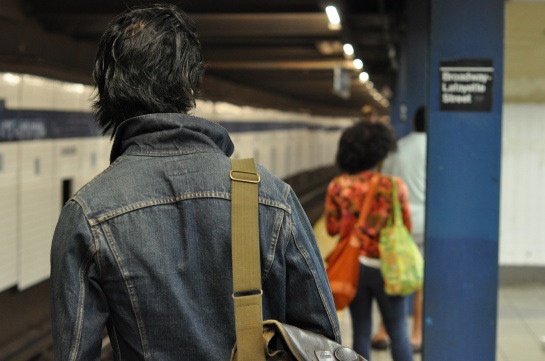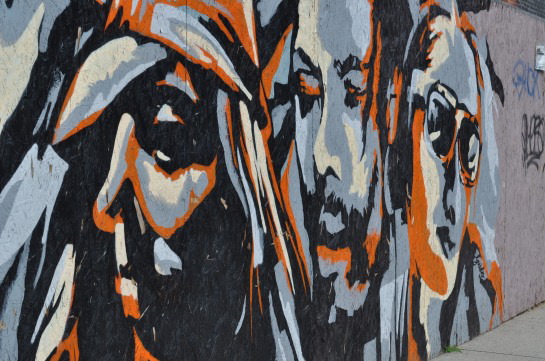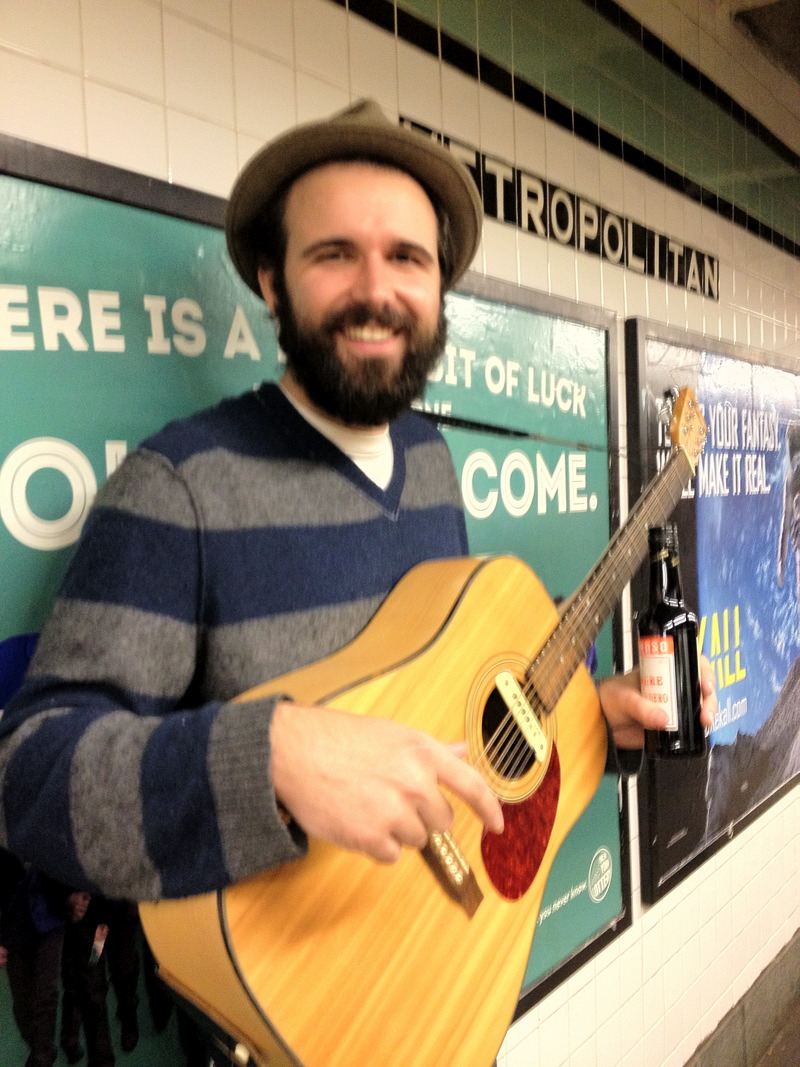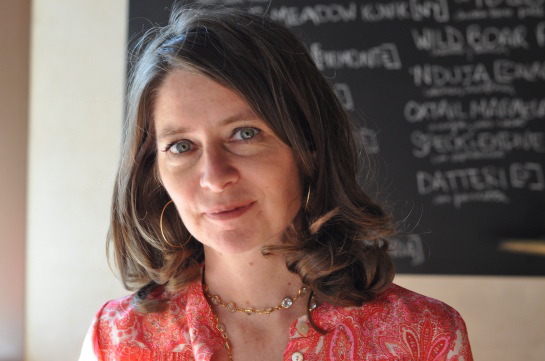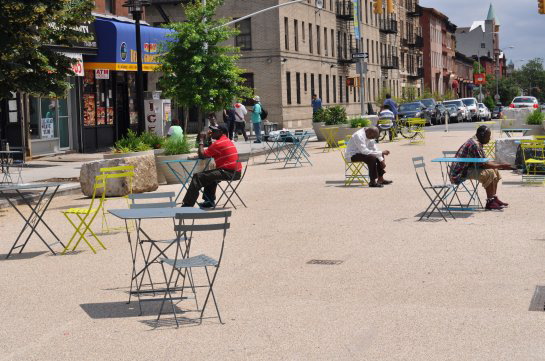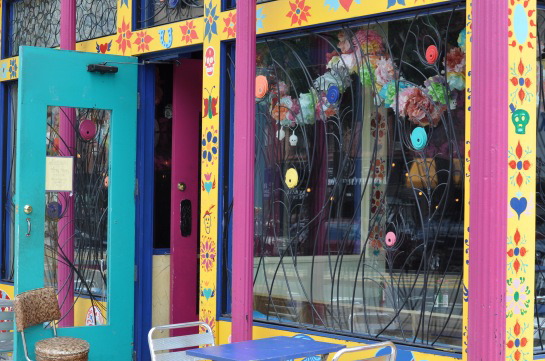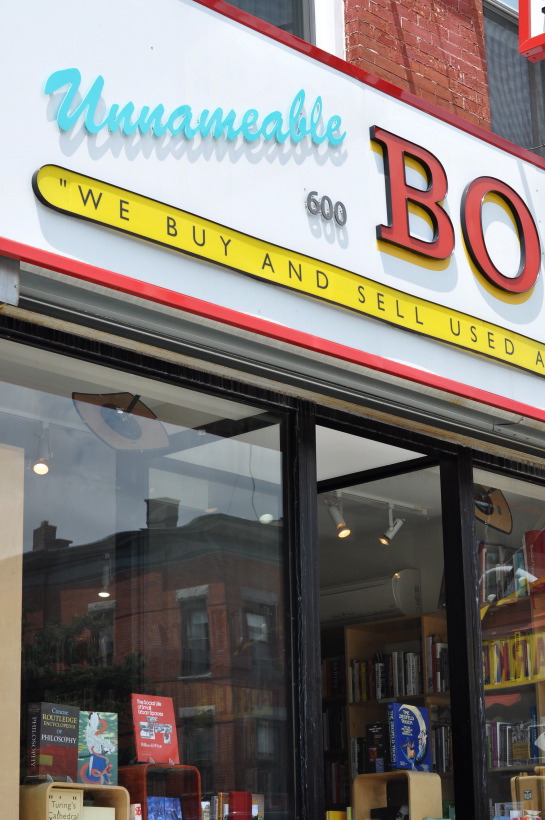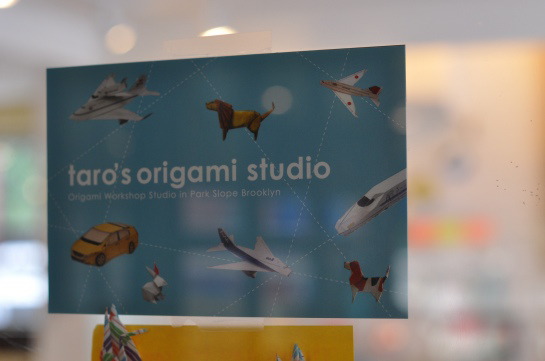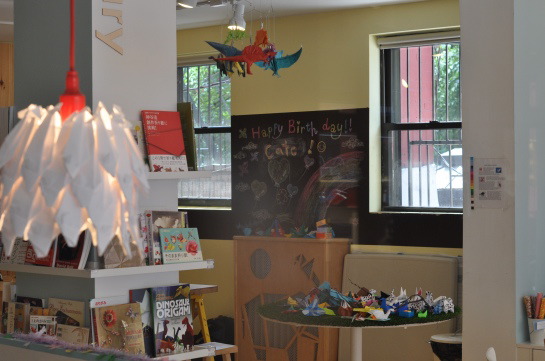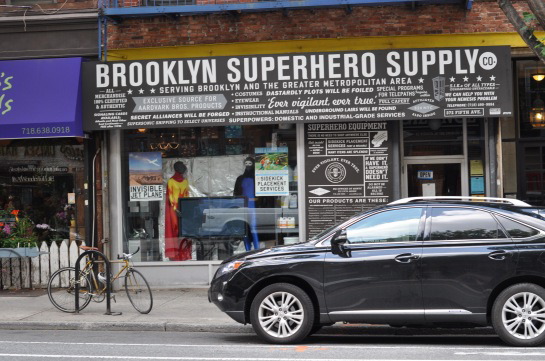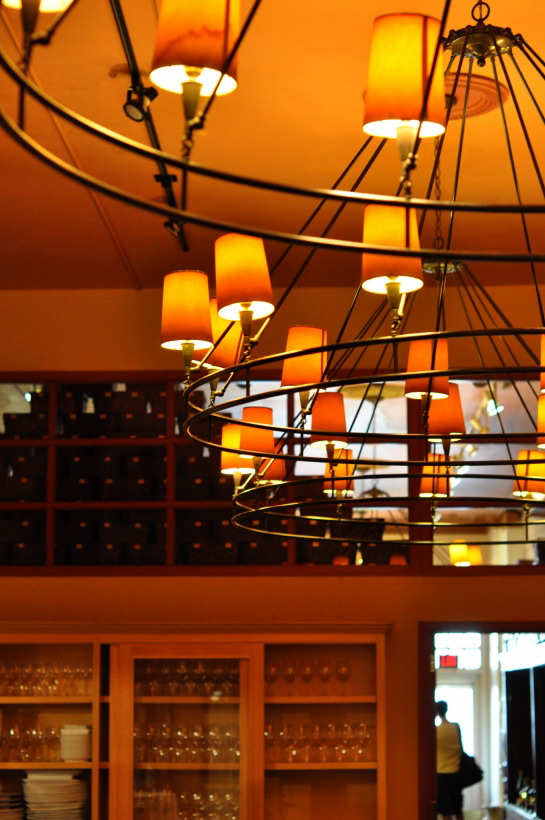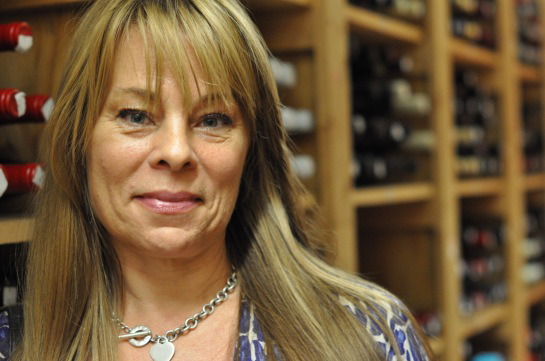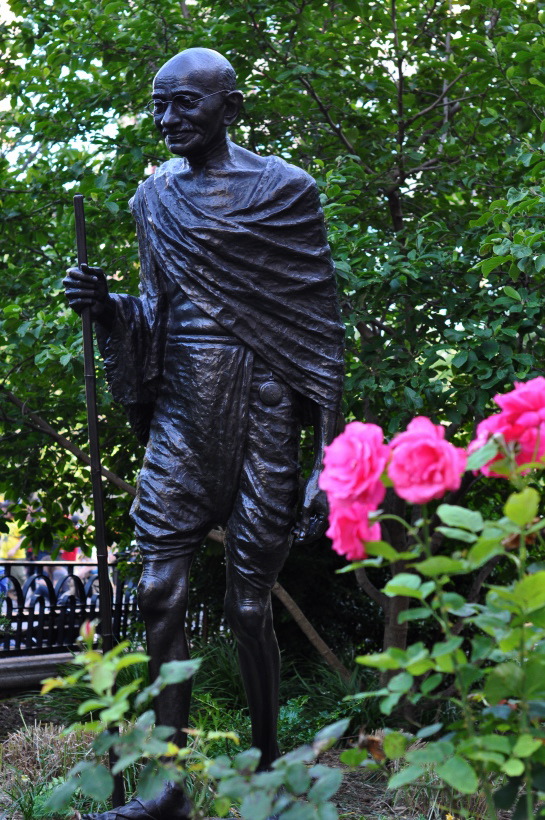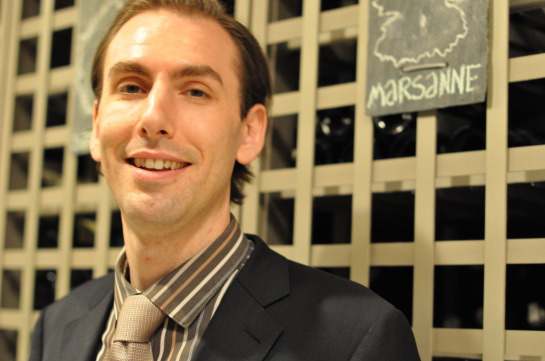Thank you to Eric Asimov for mentioning this piece in the June 20, 2012 edition of “What We’re Reading” in New York Times Diner’s Journal.
***
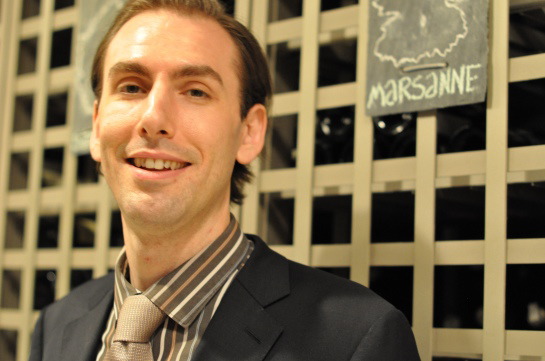
A ways into the movie The Shining, when things have really begun to unravel for the father-writer played by Jack Nicholson (at least partially because of his nightly run-ins with the devil bartender apparition), the little boy rides down one of the long hotel hallways of the grand hotel only to meet up with two little girls in blue dresses offering warning. The boy’s life is of course ever changed by the horrors instigated by the spirits of the grand hotel, but his time there is characterized by free reign of the hotel itself–every aspect of it open to him, including a kind of spiritual channeling of the other worldly energies present.
The strange circumstances of The Shining are, of course, meant to be horror entertainment, but also stand as hint to the reality that some of us have greater access to the intricacies of place than others–be it merely literal lock-and-key entry into the backdoor domains of a large hotel, or also the vibes of the universe not always admitted to or accepted by others.
Some people say, the longer a Sommelier celebrates a place in the business of serving and pairing, the more often he or she becomes able to anticipate what a customer will choose before they actually order, or to nail a perfect match between food and beverage without yet having tasted either. Shown through such ability is a blend of nuance and knowledge that characterizes an on going study not only of wine at large, or food flavors, but also human nature. It also reveals an interesting sort of sensory intuition.
This last week I was lucky enough to spend time with New York Sommelier Levi Dalton, and so, too, hear about his various experiences in the wine world and how they have helped him develop this type of sensory prescience.
Levi Dalton: Working in Wine
Known as a brilliant go to expert of Italian wine, Sommelier Levi Dalton has helped develop the wine programs at several restaurants, including the now closed New York favorites, Southern Italian focused Convivio, and Northern Italian focused Alto. However, by his tenure at Convivio and Alto with Chris Cannon, and working alongside chef Michael White, Dalton had already sharpened his skills at restaurants in Boston, Miami, and New York. But, for Dalton, his time with Cannon and White offered an experience of being fully believed in. Cannon saw in Dalton the talent he has for synthesizing unique food-wine experiences, and invited him to develop a distinctive program for the wine to go with the foods White produced. As a result, Dalton helped broaden the customers’ palate for then-lesser known grapes such as Frappato or Aglianico, and introduce a public to the phenomenon of orange wines.
Prior to his work at Convivio and Alto, Dalton worked for Daniel Boulud at Cafe Daniel, first in Miami, and then in New York. The establishment carried a prix fixe menu for which Dalton would often design wine pairings. Through the experience, Dalton learned a particular view of meal design. Daniel Boulud encourages Sommeliers to look ahead to the final wine in designing the pairings menu. That is, he stresses the idea that the final course is the grand finale, and previous courses, including wines, work to showcase this last experience even while also celebrating each step of the way on their own. To put it another way, in this view, pairing wine and food courses should not be thought of separately but instead as a dance along the full course of the meal.
Moving, then, later to work with Cannon and White, the customers were able to develop their own prix fixe menu from a range of choices. But, what customers often chose for food would readily upset the order of traditional food and wine pairings. Customers were asking for what they wanted. It’s simply that the ordering sometimes presented a particular challenge for a Sommelier. That is, if customers chose a food traditionally paired with reds to start, and then something like seafood, for example, to follow, then the second course would apparently pair with a white wine. The problem with this, of course, is that starting with a red can often over power the palate for the subtlety of a white, thus leading to the white not showing as well as it would on its own. In addition, the menus White developed often offered courses that are simply challenging for wine pairing. With the trust Cannon had placed in Dalton, he was able to develop a wine list that showcased wines unexpected in traditional pairings that could work to celebrate the meal as a whole, not just individual courses, and solve the difficulties of unusual foods, or, traditionally out of order courses.
In this way, Dalton’s work at Convivio and Alto effectively put him in a position of carrying, and thus promoting lesser known wines. Such a reality sounds exciting to many Sommeliers that dream of developing their own wine program. The additional truth of such a situation is simply how to make it work. The job of a restaurant is, after all, to serve (and develop) its clientele so that it can continue. Many venues instead choose to stick with wines that they know mainstream customers want. That is, wines currently established with good sales in the market. By doing so such venues save themselves some of the time of explaining the wine list to customers on the floor, and the risk of wines not selling simply because they’re not recognized. Taking Dalton’s approach pushes on other demands. That is, a restaurant (or shop) willing to take the risk of lesser known wines also steps into the demand of educating its public. The Sommelier is required to invest time in bridging the gap between customer knowledge and the unusual list items. The restaurant must be willing to make sure its serving staff has at least basic understanding of the wines so that they may best present them to the customer. As Dalton describes it, much of his time has been spent reflecting simply on how to make this work. That is, on what it takes to recognize a customer’s palate, and from that information get them to try and order something new that they still can enjoy. One of the simple ways he found to broach the process was just in thinking on how to form the wine list in an accessible way. As an example, instead of listing the wines simply by region or price, the wines can be organized by style and depth so that customers immediately have more information towards what they are looking for.
Dalton’s investment in wine education does not hold just at unusual grapes or wine types, but extends to lesser known producers as well. He is drawn to seeking (though not exclusively) lower production, lesser known wine makers with good quality, and interesting approach. Then he seeks, in his work, to help develop their name, and thus also their success. By exposing the public to lesser known wine makers he hopes to help people, that are still under exposed in wine, step into a higher level of success.
Dalton’s interest in helping lesser known wine makers succeed would seem to parallel his own experience in the wine world with becoming a Sommelier simply through hard work, and persistence. Dalton stepped into the New York wine scene at a time when French Sommeliers were still the easy norm, then went from working with Daniel Boulud and his team of French Sommeliers to being “the tall white guy” at the exclusive, formal Japanese restaurant, Masa. In both places, his skills were apparent and appreciated, yet his appearance and background stood out as distinct from the assumed atmosphere of the restaurant. To add to it, Dalton very much worked his way up into becoming a Sommelier, starting as a bus boy for a restaurant where he also did bottle stocking for their bar. To move up over time to Sommelier, Dalton worked a lot of extra hours, doing more than required by his particular job in order to convince people he was worth the risk of promotion.
Still, it is in his time at both Cafe Boulud and Masa that Dalton experienced serving styles that, though contradictory, still influence him. At Cafe Boulud, the presentation worked not just for eating but as a kind of welcoming entertainment. On the other hand, at Masa the focus was on a sort of strict formality meant to offer warmth and comfort through its cultivation of presentation and etiquette. It is this combination I find in Dalton’s demeanor–a vivacious (and slightly goofy) push to entertain overlaying a steady, and quieter generosity of spirit.
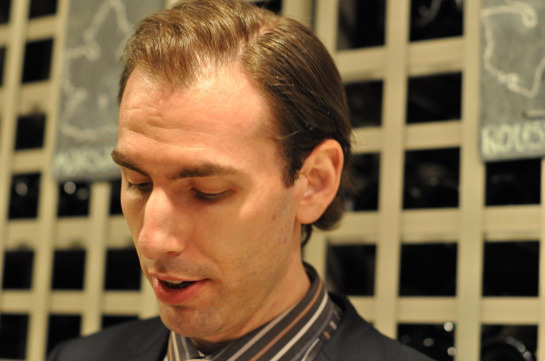
Levi Dalton: Going Back to Timberline Lodge
Raised initially in Oregon, Levi’s parents worked at the ski lodge at Timberline ski area on Mount Hood, the same building in which the movie for Stephen King’s The Shining was filmed. With his mother working as a cocktail waitress, and his father a short order cook, Levi grew up with ready access to the restaurant, but also a lot of time freely out on his own. The area was quiet enough it was safe for a kid to be out without a baby sitter. As a result, Levi often spent his days following around Walt, the facility maintenance man, as they went below the main building to fix the boiler, or go unstop a hotel room bathroom. He also spent a lot of time visiting his parents in the restaurant, hanging out in the kitchen, or watching the action on the restaurant floor.
Later, after he and his parents moved to California, work in a restaurant was an obvious go-to job for high school. He already knew how restaurants worked. At 15, then, Levi began his career working as a bus boy in a family focused restaurant in Oakland, also stocking the restaurant bar between shifts. It was yet another experience for him of restaurant life as a kind of extended family–cooks would take a nap in the restaurant between shifts, they’d have dinner together at the end of the night, and make sure he got home safe too. During this time he regularly worked on the wine side of stocking the bar, then going home after to read about the bottles he saw. The interest paired well with his general views of culture and growing up. That is, in Levi’s view, part of ones job as a young adult was to learn your way into a sort of overarching cultural knowledge studying what wasn’t ready at hand. Connected to this too was an understanding that wine simply was part of culture. It wasn’t that wine stood out as special. It was simply that to understand culture one must also understand wine. As a result, even in high school Levi spent portions of his free time reading wine magazines to educate himself towards adulthood.
Later, moving to Boston for college, he took on a waiter job to help cover expenses. A business class luxury model restaurant-hotel, The Federalist, had just opened at a time when, thanks to wine auctions, it was possible to drop a few million and establish a world class wine cellar over night. Levi was able to land a wait job for the Federalist, and spent his time going in early to help stock the wine cellar so that he could study the bottles they had in the cellar. As a waiter he found that it frustrated him to be unable to answer any questions the customers may have. So, if any such questions came up he took note of them and then would study the subject after going home that night. Between his desire for serving the customer, and his determination to learn the cellar he was soon promoted to restaurant Sommelier, and found himself leading wine classes for the other serving staff. The time at The Federalist established an impressive foundation for Levi’s palate, as the experience meant he was regularly tasting wines still seen as pinnacles of wine history, including the obvious examples of decades old Bordeaux.
From The Federalist, Levi was asked to help the restaurant’s sous chef to open a brand new restaurant, with Levi developing the wine program. It was there that he began the experience that would help ready him for his work ordering and selecting wine, beer, and spirits later at Masa, or at Convivio and Alto.
Though it took him years to take the leap, Levi has since gone on to write about wine on his own blog http://soyouwanttobeasommelier.blogspot.com/. (It was actually through his writing there that I first found anything about Levi Dalton, though it was later through twitter we became friends (pun purposeful, of course).) Asking about the delay between his clearly having established substantial knowledge in wine and his starting to write about it Levi answered honestly. He explained that in reading what others wrote he consistently thought that as much as he’d like to write he probably couldn’t. It appeared to him the person he was reading was simply smarter and more articulate than he took himself to be. He was finally gently pushed into starting to blog by being asked by numerous other people to write guest posts and articles on wine. Finally the request came enough Levi decided to take the risk and produce his own work.
He said the lesson there, and, from his story about working in wine, I take it in more than just writing too, is that when you find something you want to do, just stick with it. Don’t talk yourself out of something, just because you think someone else is better.
***
Thank you so much to Levi Dalton for taking the time to meet, and talk with me. I’m very grateful.
Copyright 2012 all rights reserved. When sharing or forwarding, please attribute to WakawakaWineReviews.com





















